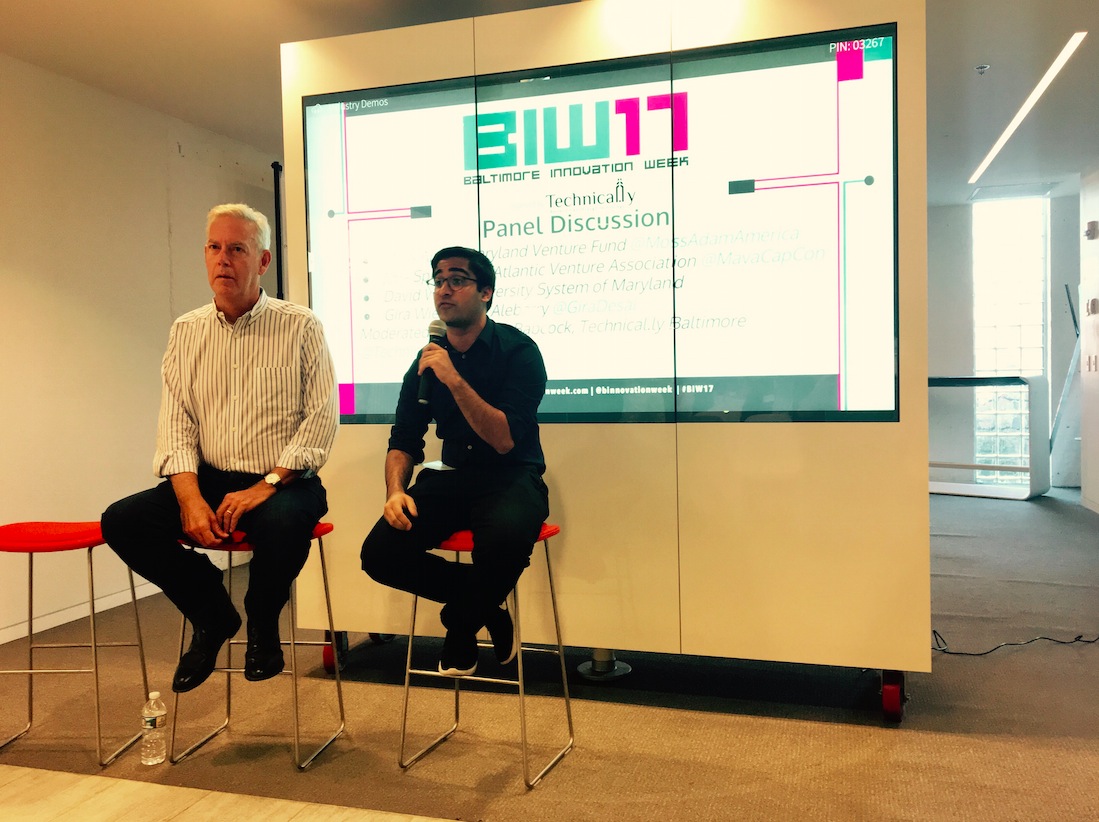John Cammack has a helpful rule for your next business meeting over a meal.
Order half as much food as the person you’re pitching. But in April 2016, Param Shah was trying to be natural. So he ordered a big stack of pancakes at his first meeting with Cammack, a prominent Baltimore angel investor. The meeting was at the Towson Diner on York Road and was brokered by a mutual contact.
The precocious Shah, 21, was beginning the process of raising capital to build a product he helped conceive of as an undergraduate at Hopkins (He’s since put school on pause). He walked Cammack through a pitch deck, a little rough and underdeveloped. But between munching, Cammack saw something he liked. And, critically, Shah, too, gained a belief that Cammack had something to offer beyond a check.
Later that year, Shah’s company FactoryFour (Read this profile of the pivot that created FactoryFour from Fusiform earlier this year.) announced an $800,000 seed round that included Cammack, other Baltimore Angels and others. Helped by the investment, Shah has 13 full-timers and nearly that many part-timers, a team he’s navigating with active advice.
Both Shah and Cammack say the relationship is working. Though their relationship has lots of lessons for other founders and investors, Cammack is careful to clarify that his level of involvement with FactoryFour is “not typical of my investment interactions.”
“What is distinctive was my decision to also be an advisor and become a board member and Param’s willingness to embrace this,” said Cammack. After that breakfast meeting, Cammack gave feedback on the presentation, which Shah gobbled up. This year, they’ve settled into a special kind of relationship. They text about small and large business decisions and related issues throughout the week, with perhaps a more formal checkin call or meeting along the way.
Cammack is investor, board member and adviser, roles that all have slightly different, if overlapping responsibilities, but he notes he’s careful to not overstep. This is Shah’s company (with cofounder Alex Matthews) but it gives new light to the idea that taking on an investor is very much like adding a business partner, so choose wisely. It’s not just a check.
Cammack is tall, with a tuft of silver hair and a certain blue blood feel. Shah is short and thoughtful, with a pair of round eyeglasses. They make a real pair.
“First-time entrepreneurs, I evaluate them differently than those who have been to the rodeo once or twice because there is a track record,” said Cammack. So what did Cammack see with Shah?
- Something close to a track record: In high school, Shah started Lotus Life Foundation, a global nonprofit that is still in operations. “I knew he could start that something that can last,” Cammack said.
- Team: Though the reputation of a Johns Hopkins education counted for something, Cammack made it a point to see who else was working on the project, including Shah’s cofounder Mathews.
- Willingness to learn: Shah was certain about what he knew best but was open to insight from more experienced business leaders, like Cammack.
“If I have a first-time founder from a marquee school who thinks they know it all:” said Cammack. “Then we’re all screwed.”
Shah and Matthews have already pivoted their idea with market feedback. First Fusiform was going to produce a specific 3D-printed medical device but found their idea was way beyond the digital infrastructure available for most of their potential markets. So instead Shah wants to be part of the scanning and creation process for any number of industries — he told a 500 Startups pitch event crowd that he wants to be the internet of manufacturing.
“This is a guy who isn’t here to hit a single,” Cammack said. The Fusiform team is young and idealistic. So Cammack is a bit more involved than with other founders, because he wants to help with “the staging that respects the capital” to get neither behind nor ahead in the company’s development.
“To friends and family and employees and customers, you’re always painting the rosiest picture possible,” said Shah. “The investor relationship becomes being about as honest as you possibly can be based on objective data.”
Recently Shah was preparing his third investor letter, a kind of official document overviewing where a CEO identifies the company is on its plan. After seeing a draft form, Cammack gave a recommendation to change it. Another experienced investor who is a board adviser for the company had very different advice. Shah had to take the best from both of these important advisers to better deliver information and set a near-term course.
“Investors believe in us,” said Shah, of the relationship a founder has after you’ve already entered a financial relationship. “So then they have to enable us to do what they already believe we can do.”
Cammack and Shah were discussing the quirky relationship of an investor and a funded entrepreneur on stage during a Baltimore Innovation Week event. They were at ease together. Cammack turned to Shah.
“It might be strange to look at someone three times your age who still wants to grow and learn,” Cammack said. “I want to be doing that to the day before I die.”







